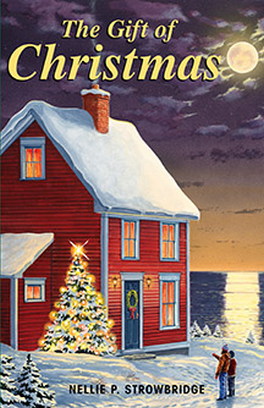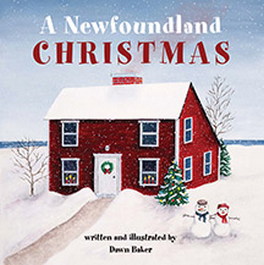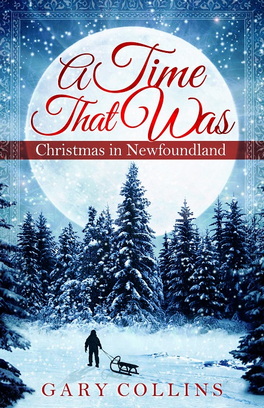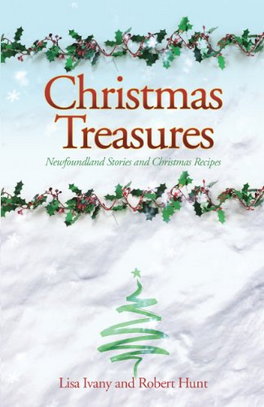Any Mummers ’Lowed In?
Christmas Mummering Traditions in Newfoundland and Labrador
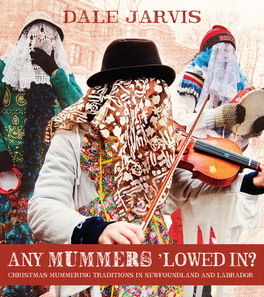
As the Twelve Days of Christmas roll around each year in Newfoundland and Labrador, you might see oddly padded figures with humps on their backs, shoes on the wrong feet, their auntie’s bra on the outside of their clothes, with faces hidden behind masks or bits of old lace. These characters trudge from door to door or make surprise appearances at parties, seniors’ homes, or workplaces. Once inside, they dance and sing and have a drink or two while people try to guess just who is behind all that clothing. Then, before they roast from the heat of the kitchen, they head back out into the darkness and do it all over again. These strange creatures are mummers, though they can go by other names: jannies, fools, oonchicks, or darbies. Whatever you call them, and however they are costumed, they are a firm part of the province’s Christmas folklore. But while today’s mummers are often portrayed as friendly and entertaining, they have a past checkered with violence, vandalism, and even murder. By the 1860s, mummering had been made illegal, a ban which stayed in place for well over a century, but which failed to stamp out a beloved, and complicated, Christmas tradition. Folklorist Dale Jarvis traces the history of the custom in Newfoundland and Labrador and charts the mummer’s path through periods of decline and revival. Using archival records, historic photographs, oral histories, and personal interviews with those who have kept the tradition alive, he tells the story of the jannies themselves. Along the way, he will introduce you to other colourful Yuletide characters, including ugly stick–makers, the wild-eyed, snapping-jawed hobby horse, the St. Stephen’s Day wren boys, the actors of the old mummers plays, and the fearsome nalujuit of Northern Labrador. Welcome to the colourful world of Christmas in Newfoundland and Labrador, a holiday that is not complete without a little bit of mischief and foolishness!
Where Do Mummers Come From?
The tradition of mummering came to the New World with early settlers and was introduced to various communities all along the Atlantic seaboard. Variations on the tradition evolved in the United States, the Maritime Provinces, the Caribbean, and elsewhere, while mummering and jannying evolved their own forms in Newfoundland. It was certainly well established in Newfoundland by the nineteenth century. J. B. Jukes, a Cambridge scholar visiting the island in 1839, wrote: Men, dressed in all kinds of fantastic disguises, and some in women’s clothes, with gaudy colours and painted faces, and generally armed with a bladder full of pebbles tied to a kind of a whip, paraded the streets, playing practical jokes on each other and on the passers by, performing rude dances, and soliciting money or grog. They called themselves Fools and Mummers. A few years later, Sir Richard Bonnycastle described the Christmas festivities in St. John’s for 1842, which he called “a sort of saturnalia amongst the lower classes.” He noted that the revels started on Christmas and lasted for three days: The mummers prepare, before the New Year, dresses of all possible shapes and hues, most of which are something like that of the harlequin and the clown in pantomimes, but the general colour is white, with sundry bedaubments of tinsel and paint. A huge paper cocked hat is one favourite headpiece, and everyone among the gentlemen, excepting the captain or leader and his two or three assistants are masked. The ladies are represented by young fishermen, who are painted, but not masked. Some of the masks are very grotesque, and the fools or clowns are furnished with thongs and bladders, with which they belabour the exterior mob. The most widely known aspect of mummering in Newfoundland and Labrador is the disguised house visit. The concept of Christmastime house-visiting in costume may have come to the province with settlers from the West Country of England, which had a similar tradition. Folklorist Martin Lovelace, visiting Dorset in 1976, met a seventy-six-year-old man named Bill Tuck, who described the Dorset tradition to him: I realized with great excitement that he was talking about a tradition of mumming that was identical with the Newfoundland house-visit: people in disguise visited neighbours’ houses where their hosts joined in the game of guessing their identities, sharing food and drink with the mummers before they continued on their way. Mr. Tuck had participated in these house-visits as a boy in Dorset some 60 years ago. Some have argued that the word “mummer” itself is derived from a word meaning “mask.” The German mumme means “mask” or “maker” while vermommen in Dutch means “to wear a disguise.” My musty old volumes of Encyclopaedia Britannica (post-Wikipedia readers won’t know what that is) also suggest a possible connection with the Greek mommo or mormo, and suggest that “Mormo was probably an underworld goddess, resembling the ogress who gave her name to the Perchten runners, German masked mummers who paraded on Twelfth-night.”A very handsome lavishly illustrated book, which conveys not only joy and enthusiasm, but much information about the history of mummering and the various forms it has taken in Newfoundland and Labrador.-- The Guardian --
[Any Mummers ‘Lowed In?] shows the ins and outs of mummers and all they have been through and how they have become the face of Newfoundland over the last few years. Partnered with many pictures and a lot of research, Jarvis truly makes this story interesting and well-balanced.-- Tint of Ink --
Any Mummers ’Lowed In? is written by a skilled storyteller, beautifully illustrated with archival images and family photos, and dotted with information about other Christmas traditions, songs, and recipes. It’s a treasure for those interested in Newfoundland, Christmas traditions, and intangible cultural heritage.-- Canada’s History --
Shopping Cart
You have no items in your shopping cart
| Tax | Price | Qty | Total | |
|---|---|---|---|---|
| No items in the Cart. | ||||
| Sub Total | $0.00 |
|---|---|
| Shipping | $0.00 |
| HST (15%) | $0.00 |
| GST (5%) | $0.00 |
| Total | $0.00 |










